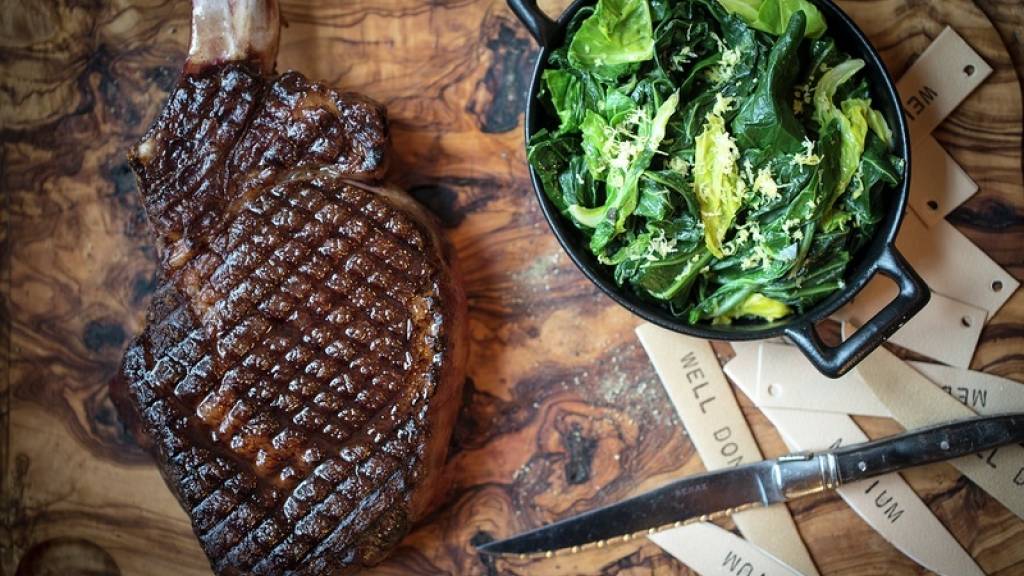How to cook Wagyu
Sunday 30 June 2019

Wagyu beef is known around the world as being an item of luxury, but do you know what makes this type or beef so special or what the difference is between Wagyu and a piece of Aberdeen Angus?
THE HISTORY OF WAGYU
Wagyu, as an eating animal, can be sourced back as far as the 1800s. Before this, it was just a working animal that was fed a high calorie diet to help it recover quickly and work harder. The name literally translates as Japanese beef (wa means Japanese, gyu means beef).
Wagyu is not a breed of cattle. Instead, its meat originates from a selection of Japanese breeds, including Japanese Black (the most common breed of Wagyu), Japanese Brown, Japanese Shorthorn and Japanese Polled.
Each of these breeds are renowned for their high level of fat marbling, emphasised by how they are reared. This fat is not like the streaks commonly seen on Western steaks, instead it is spread evenly throughout the meat and is soft in texture with a low melting point.
Rearing Wagyu
Wagyu is expensive because of the way this it is looked after and fed when it is raised. There are very strict guidelines on feeding and rearing in order to receive the Wagyu mark. Breeding cattle are grazed on pasture and calves are fed with special feed, to encourage marbling. Calves are hand fed a milk replacement and even wear jackets when it is cold.
Older Wagyu cattle are raised in barns and are fed a diet of rice straws, whole crop silage and concentrate, and over roughly three years they grow up to about 700kg, (for normal beef, it takes 15 months).
Every Wagyu cow has a name and a birth certificate - meaning all meat can be traced back to a specific farm. They are sometimes brushed to increase blood circulation and relieve stress.
Aberdeen Angus Vs Wagyu
Aberdeen Angus is everywhere. Its used in steakhouses, luxury burger joints, and it seems to be the buzzword for quality when it comes to steak. But does it beat Wagyu?
Unlike Wagyu, Aberdeen Angus cattle are derived from one breed only. They are hardy, stocky and built to survive harsh Scottish winters. They are very muscular and feed on grass, as well as corn and wheat which are introduced into their diet to improve the flavour of their meat, as well as their fat marbling. It's this marbling which the Aberdeen Angus is known for, and it does mean that its meat is tender and juicy.
So, both Aberdeen Angus and Wagyu have a lot of marbling - meaning they both have a better flavour than other, leaner, breeds. However, lovers of good steak say that they can easily tell the difference between the two.
the impact on flavour
Wagyu marbling results in a different type of flavour than you get in other breeds of cow. Because the fat melts at a much lower temperature this attributes to a buttery, rich flavour which is much more luxurious than other steaks.
The marbling of the fat throughout the meat is also often compared with olive oil and fatty fish thanks to its high monounsaturated fat content and high levels of omega 3 and 6.
Wagyu steaks are ranked per a grading system, ranging from A1 (less fat) to A5 (most fat). This grade can only be rewarded once the meat has been carved, meaning the true value is only determined once the meat has been prepared.
Cooking & Carving Wagyu
Wagyu can be cooked as a whole steak, or minced and used in meatballs or burger patties. It can also be sliced very thinly and eaten raw. Because of its extremely high fat content, some people find it too fatty to eat as a full steak - if you prefer the flavour to the fat, then using Wagyu as a mincemeat or in thin strips might be better for you.
When you cook the meat as a steak, make sure to remove it from the fridge and bring it up to room temperature (for about 60 minutes). Once you start grilling or barbecuing, make sure to keep turning it.
Carving wagyu beef is an art of its own, and a skill you can only learn best from the experts in Japan themselves. Different techniques are used to cut the meat, where butchers instead follow the muscle as they carve.
Wagyu at Gordon Ramsay Restaurants
At Gordon Ramsay Restaurants in London, Wagyu is a firm favourite amongst our chefs. It takes pride of place as a whole steak at our three maze Grills, in Mayfair and Chelsea, as well as appearing on the menu at Lucky Cat by Gordon Ramsay - an Asian Eating House. Here Wagyu is used more traditionally and sliced thinly, like it is in its native Japan. You'll discover delicious Wagyu tataki with truffle ponzu and shiso.
 Gordon Ramsay Restaurants
Gordon Ramsay Restaurants